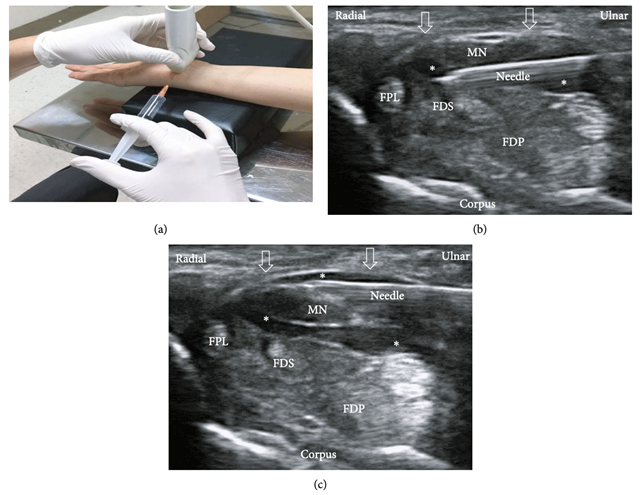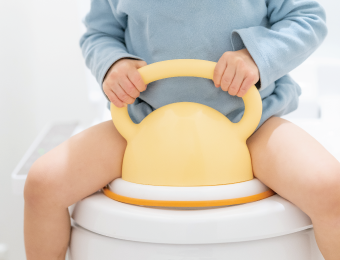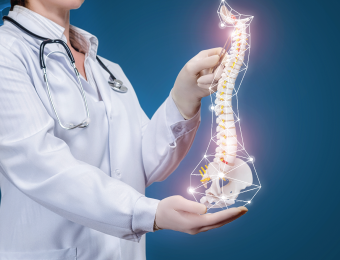
Treating Carpal Tunnel Syndrome with Low-Concentration Dextrose Injection via Ultrasound
SOARAWIT WEERASOPONE, M.D.
Carpal tunnel syndrome is a common condition that often occurs in individuals aged 50 and above, particularly in women who regularly use their hands for tasks such as housework or homemaking. However, it can also affect men.
Patients typically begin to experience pain and numbness due to compression of the median nerve. Sensation in the thumb to the ring finger diminishes, often accompanied by tingling sensations at the fingertips. As the condition progresses, nighttime awakening due to severe pain may occur. Weakness in the thenar muscles may develop, leading to partial loss of movement in the thumb.
Treatment usually begins with behavioral adjustments to reduce wrist usage and wearing splints to limit movement. Additionally, pain and swelling reduction medications such as NSAIDs, muscle relaxants, and Vitamin B supplements can be helpful. If symptoms do not improve, injections and surgery may be considered as further treatment options.


Injection of this type requires precision targeting around the nerve, hence the necessity for ultrasound-guided injection of 5% dextrose in water (5% DW) for carpal tunnel syndrome (CTS).
Patients typically begin to experience pain and numbness due to compression of the median nerve. Sensation in the thumb to the ring finger diminishes, often accompanied by tingling sensations at the fingertips. As the condition progresses, nighttime awakening due to severe pain may occur. Weakness in the thenar muscles may develop, leading to partial loss of movement in the thumb.
Treatment usually begins with behavioral adjustments to reduce wrist usage and wearing splints to limit movement. Additionally, pain and swelling reduction medications such as NSAIDs, muscle relaxants, and Vitamin B supplements can be helpful. If symptoms do not improve, injections and surgery may be considered as further treatment options.

In the present, there is a wide range of options for injections, with steroids being the main choice due to their easy availability. However, they come with the risk of causing irritation to nerves and important adjacent organs, leading to limitations on the number of injections, typically no more than twice. Therefore, alternative options are being considered.
One such new option is 5% dextrose in water (5% DW), which helps improve symptoms and disease prognosis with minimal side effects. This solution aids in nerve regeneration and can be injected similarly to nerve hydrodissection, facilitating the dissolution of nerve adhesions.

Injection of this type requires precision targeting around the nerve, hence the necessity for ultrasound-guided injection of 5% dextrose in water (5% DW) for carpal tunnel syndrome (CTS).
31 Jan, 2024

SOARAWIT WEERASOPONE, M.D.
Specialties Orthopedic Surgery, Hand and Microsurgery
 EN
EN
 TH
TH CN
CN









